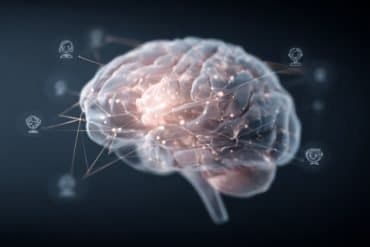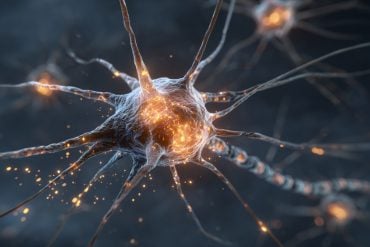Summary: Researchers developed the first comprehensive brain map showing activity in prairie voles during mating and bonding, uncovering 68 brain regions involved in forming enduring monogamous relationships. This study challenges previous assumptions that male and female brains operate differently during these processes, revealing nearly identical patterns of brain activity in both sexes.
Surprisingly, the most significant predictor of bonding-related brain activity was found to be male ejaculation, suggesting a profound emotional state that facilitates pair bonding. This groundbreaking research not only offers insights into the neurobiological basis of monogamy but also hints at potential parallels in human relationship formation and maintenance.
Key Facts:
- Comprehensive Brain Activity Mapping: The study identified 68 distinct brain regions involved in the stages of mating, bonding, and the development of stable relationships in prairie voles.
- Gender Similarities in Brain Patterns: Contrary to previous beliefs, the research found nearly identical patterns of brain activity in both male and female voles during bonding processes.
- Emotional State Tied to Male Ejaculation: The strongest predictor of bonding-related brain activity was male ejaculation, indicating its significant role in facilitating pair bonding and potentially suggesting orgasm-like responses in both sexes.
Source: UT Austin
How does sex relate to lasting love?
To answer that question, scientists have long studied a small Midwestern rodent called the prairie vole, one of the few mammals known to form long-term, monogamous relationships.
A team of researchers including Steven Phelps at The University of Texas at Austin has created the first brain-wide map of regions that are active in prairie voles during mating and pair bonding.
The researchers found that bonding voles experience a storm of brain activity distributed across 68 distinct brain regions that make up seven brain-wide circuits. The brain activity correlates with three stages of behavior: mating, bonding and the emergence of a stable, enduring bond.
Most of these brain regions the researchers identified were not previously associated with bonding, so the map reveals new places to look in the human brain to understand how we form and maintain close relationships.
Earlier studies concluded that male and female brains often use fundamentally different mechanisms to produce the same behaviors, such as mating and nurturing offspring. But in this study, bonding males and females had nearly identical patterns of brain activity.
“That was a surprise,” said Phelps, a professor of integrative biology at UT Austin and senior author of the new study in the journal eLife.
“Sex hormones like testosterone, estrogen and progesterone are important for sexual, aggressive and parental behaviors, so the prevailing hypothesis was that brain activity during mating and bonding would also be different between the sexes.”
Compared with humans, prairie voles have whirlwind courtships. Within half an hour of being together, a male and female begin to have sex, and they will do so repeatedly, often many times an hour.
Within a day, their amorousness will lead the pair to form a bond that can last a lifetime. Bonded pairs will groom each other, console each other when stressed, defend their shared territory and rear their young together.
The researchers were able to pinpoint with high resolution which brain cells were active in vole brains at various points over the course of the process that leads to and includes bonding.
This is the first time such a method has been applied to prairie voles. By studying more than 200 prairie voles across multiple times during mating and bonding, the researchers produced an unprecedented and foundational data set.
The strongest predictor of activity across the 68 brain regions that the researchers identified surprised them. It was male ejaculation, suggesting the experience elicits a profound emotional state—and not only in the affected males. Females, too, had more bonding-related brain activity with males who reached that milestone.
“The brain and behavior data suggest that both sexes may be having orgasm-like responses, and these ‘orgasms’ coordinate the formation of a bond,” Phelps said. “If true, it would imply that orgasms can serve as a means to promote connection, as has long been suggested in humans.”
Phelps cautioned that it’s impossible to know whether a female prairie vole is having an orgasm simply by watching its sexual behavior, though previous research has found that some female animals such as monkeys have these physiological responses.
In addition to Phelps, the study’s co-authors are Morgan Gustison, a former postdoctoral researcher at UT Austin now at the University of Western Ontario, Rodrigo Muñoz-Castañeda at Weill Cornell Medicine, and Pavel Osten at Cold Spring Harbor Laboratory.
Funding: The National Institutes of Health funded the research.
About this intimacy and brain mapping research news
Author: Marc Airhart
Source: UT Austin
Contact: Marc Airhart – UT Austin
Image: The image is credited to Neuroscience News
Original Research: Open access.
“Sexual coordination in a whole-brain map of prairie vole pair bonding” by Steven Phelps et al. eLife
Abstract
Sexual coordination in a whole-brain map of prairie vole pair bonding
Sexual bonds are central to the social lives of many species, including humans, and monogamous prairie voles have become the predominant model for investigating such attachments.
We developed an automated whole-brain mapping pipeline to identify brain circuits underlying pair-bonding behavior. We identified bonding-related c-Fos induction in 68 brain regions clustered in seven major brain-wide neuronal circuits.
These circuits include known regulators of bonding, such as the bed nucleus of the stria terminalis, paraventricular hypothalamus, ventral pallidum, and prefrontal cortex. They also include brain regions previously unknown to shape bonding, such as ventromedial hypothalamus, medial preoptic area, and the medial amygdala, but that play essential roles in bonding-relevant processes, such as sexual behavior, social reward, and territorial aggression.
Contrary to some hypotheses, we found that circuits active during mating and bonding were largely sexually monomorphic. Moreover, c-Fos induction across regions was strikingly consistent between members of a pair, with activity best predicted by rates of ejaculation.
A novel cluster of regions centered in the amygdala remained coordinated after bonds had formed, suggesting novel substrates for bond maintenance.
Our tools and results provide an unprecedented resource for elucidating the networks that translate sexual experience into an enduring bond.







